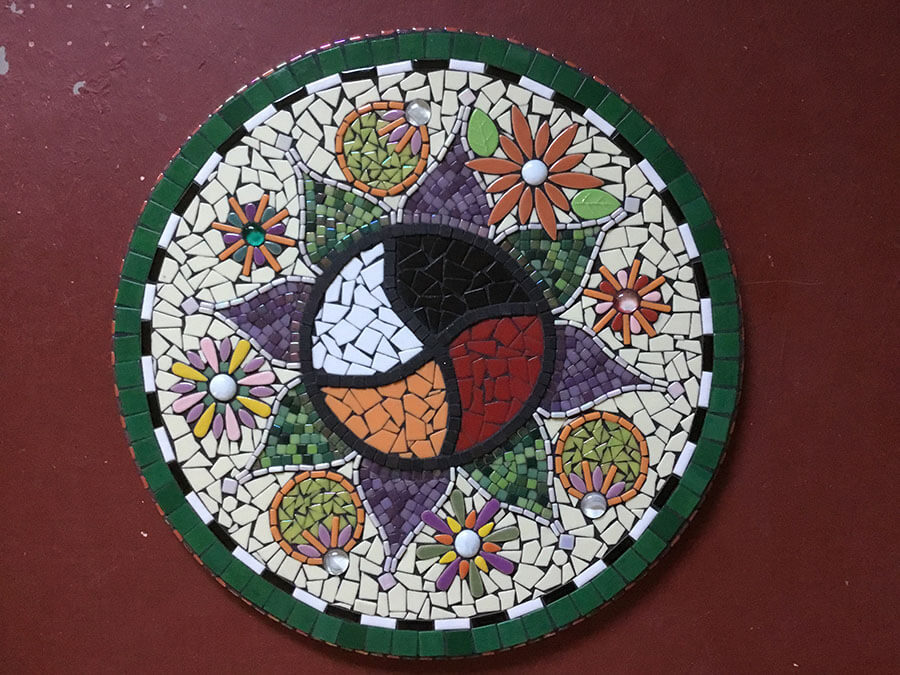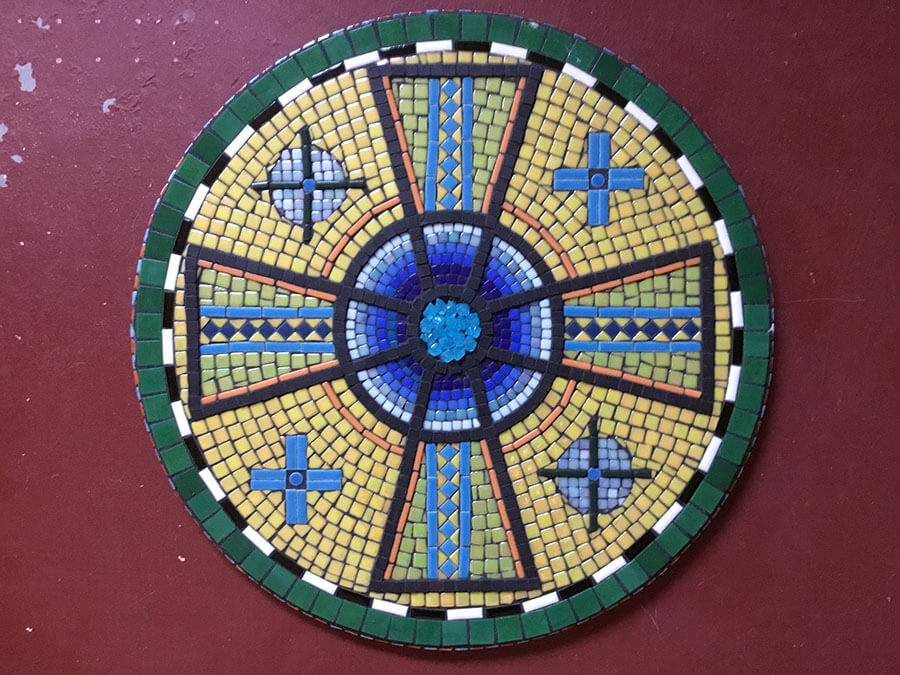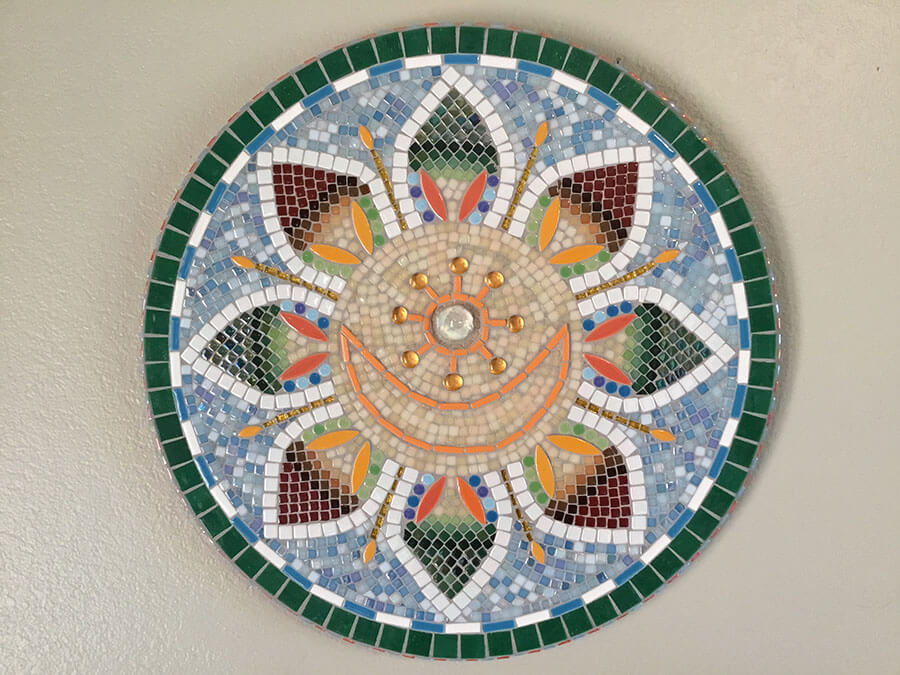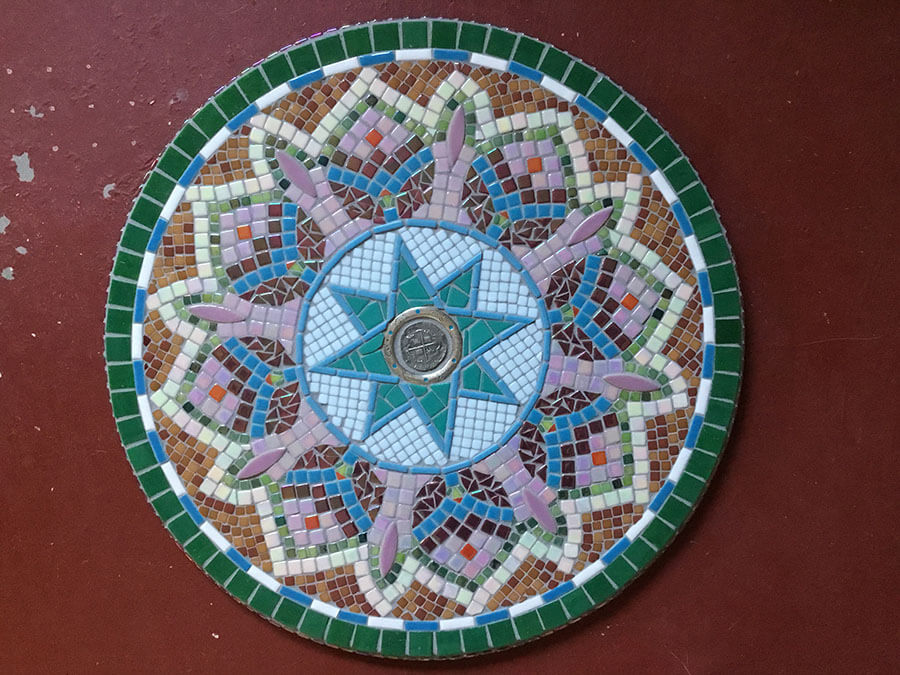New Mexico artist Debbi Murzyn emailed me some pictures of her mosaic mandalas that she made using Native American symbols as the center of the designs.
She says she didn’t realize her cultural faux pas until she had completed them, and I think she was a little surprised by the fact that she was surprised.
After all, she does live in New Mexico and is sensitive to the problems of cultural appropriation.
To me, that gives some indication that Debbi was focused on the design of the art itself and not thinking in terms of the context of the symbol or how if would play with an audience.
Also, the mandalas don’t reproduce each symbol in the canonical way most commonly drawn. That is another indication that the art was made from the heart as opposed to leveraging the Native American associations with the symbols.
The mandalas are also interesting and skilled art in ways that don’t have anything to do with the symbols.
First there is the subtle use of harmonious hues and contrasts, and there are also some plays on symmetry.
Those were the things that dominated my attention when I first saw the mandalas.
Cultural Appropriation?
Debbi says that she would never show or sell these mosaics in a gallery to avoid the problem of cultural appropriation but is giving them to friends instead.
I thought the mandalas were sufficiently worthy as art to be featured in an article with the above caveats and acknowledgements.
I think that is more than fair because the use of the symbols isn’t the most noticeable aspect of the art.
In fact, I suspect most viewers, even relatively informed viewers wouldn’t notice the symbols as being Native American in particular if the pieces weren’t presented as a series, and even then they still might not make that connection.
Having flipped through many art history and archeology books, I can think of countless examples of similar forms of stars, crescents, crosses, and bisected circles with color fields.
Symbols from different cultures separated by time and geography can look remarkably similar, and the reason is simple: These are basic icons of the natural world as depicted by the human eye.
“There is nothing new under the sun.”
All that being said, the advantages of steering clear of ethnic and tribal symbols in your work is that you get to avoid the issue.
Four Stages Mandala

Notice how the Four Stages symbol at the center of the mandala isn’t drawn or colored in the most common way with straight lines and primary yellow instead of a yellow orange.
For me, the curving lines evoke the Chinese yin yang symbol and the many ancient swirling cross designs of Europe and Asia as much as it does a Native American medicine wheel.
What caught my eye was the play with the symmetry.
Notice how the orange flower on the upper left crosses the boundaries of the petals of the large central lotus. All the satellite flowers are unique in design or orientation.
The emphasis on green and the floral motif is a departure from traditional depictions of medicine wheels.
The spirit of what it is lives in its individuality. This isn’t a dead copy.
Earth Mandala

A cross inside a circle is known as a sun cross and was ubiquitous in ancient Europe. In ancient Egyptian, it was the symbol for town.
It is also the astronomical symbol for planet Earth. In mythologies, the four cardinal directions define the Earth, and ancient villages were aligned along these axes.
A circle with a cross in it has always been an intuitive symbol of the Earth and a point on that Earth.
I think it would be hard for any group living or dead to trademark it.
Anyway, this mandala is interesting because there is diagonal symmetry in one element and rectilinear symmetry in a second element.
Also, the color scheme is a healthy departure from the cliche color schemes of Southwestern art.
At the same time, the cool tones make it a great contrast for a red adobe wall.
I very much appreciate the fact that the artist took the photos on a nice red maroon floor.
I like the border of black and white surrounded by green, which is even more effective than it was in the previous mosaic.

Harmony
The Star and Crescent symbol is ancient and predates Islam. The version depicted above is rendered similar to how it was drawn in Byzantium in the 1st century BC.
I think the star in the Native American symbol is actually a flower. If so, a flower and crescent moon is an excellent symbol for harmony because of their intrinsic reference to cycles and seasons.
What I noticed about this mosaic was the variegated blue background and the color transitions of the petals.


Leave a Reply